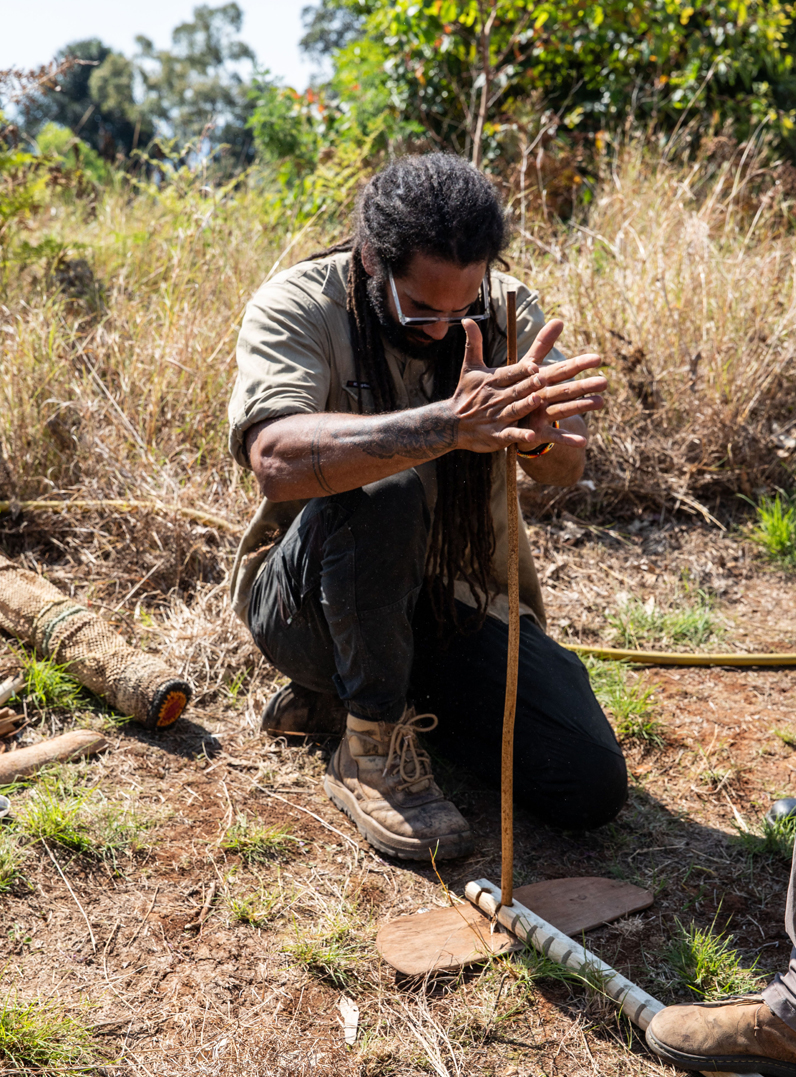In September 2024, Indigenous and non-Indigenous people came together on Bundjalung Country [Lismore] in northern New South Wales for the 2024 National Indigenous Disaster Resilience Gathering.
The gathering followed the inaugural National Indigenous Disaster Resilience (NIDR) Summit in Brisbane in 2023. The aim was to showcase Indigenous excellence and leadership in emergency and land management and disaster resilience across Australia.
The event was convened by the NIDR program at Monash University, led by Dr Bhiamie Williamson, in collaboration with local event partners, Jagun Alliance, the Koori Mail and Resilient Lismore.
Delegates came together united by a common understanding that, despite catastrophic events like bushfires, floods and cyclones that disproportionately affect Indigenous peoples, Indigenous leadership is largely missing from emergency management arrangements. In addition, Indigenous priorities are often overlooked in longer-term recovery processes.
The gathering was an opportunity for leaders from various sectors and regions engaged in building resilience to identify common challenges and share ideas on how to respond to threats posed by climate change and more frequent, severe environmental disasters.
The 2024 NIDR Gathering
Only 2 years before, in March 2022, Lismore and the wider Northern Rivers region of New South Wales experienced significant flooding that destroyed thousands of homes and businesses. Ongoing recovery from those floods has been a collaboration between Indigenous and non-Indigenous community leaders.
The 3-day gathering was intentionally designed for delegates to share knowledge while also connecting with local places and Indigenous cultures. Keynotes, panel sessions and workshops were collected around a full day of on-Country activities so that attendees could learn from local community leaders and Elders about effective post-flood recovery. Delegates, including researchers, policy makers and community leaders, observed first-hand the lingering effects of the floods on the community that remains in recovery. They heard stories of the recovery and resilience-building efforts that have been made.
The gathering was opened with a keynote address from Naomi Moran, CEO of the Koori Mail. The keynote was due recognition of the extraordinary leadership demonstrated by the Koori Mail that championed the humanitarian response to the floods in the days and weeks following.
International keynotes included Dr Amy Cardinal Christianson from Turtle Island in Canada, Litea Biukoto from Fiji and Jamie Ruwhiu from Aotearoa New Zealand, all of whom reflected on the challenges in their own regions and the larger international struggle of Indigenous groups being affected by major disaster events.
Carlie Atkinson shared her insights as both a resident of the Northern Rivers area who experienced the floods and as a leader working with communities to promote healing alongside the recovery of physical townships.
Keynote speakers were complemented by presenters facilitating diverse sessions that included the role of ranger groups in disaster responses, experiences of Aboriginal health services as well as legal issues in post-disaster settings. There were also workshops about embedding Indigenous data sovereignty into grant evaluation, cultural burning as a method for disaster mitigation and harnessing the anger and hope that define people's emotional responses to climate change.
Delegates were given the opportunity to participate in men’s and women’s yarning circles as well as a wellbeing and weaving hub.
Connection, conversation, collaboration
Connection, conversation and collaboration were the fruits of healthy debate and deliberation by delegates who shared experiences of environmental disasters in their own communities. Presenters shared personal, professional and organisational accounts of responding to disaster events and the opportunities and challenges they have found in longer-term recovery processes.
Conversations were grounded by still-raw experiences of the floods shared by residents of Lismore. As well as being raw, these stories were also uplifting. The on-Country activities presented additional opportunities to connect with the community and Country through excursions and activities such as cultural tours of the Byron Shire, a bus tour exploring flood-hit landmarks of the Lismore township and participating in a cultural burn led by local partners, Jagan Alliance.

The on-Country activities meant that attendees could learn from local community leaders and Elders about effective recovery.
Image: Gabrielle Connole
The gathering as un-conferencing
The 2024 gathering provided opportunities to learn from the insights of Indigenous communities, how to harness the strength of community-based organisations and the scope of possibilities in adopting a Caring for Country mindset in disaster mitigation and adaptation. The gathering also offered a glimpse of what is possible by redefining how people come together. This ‘un-conference’ offered an immersive experience and provided a depth of engagement and a unique perspective of the nature of disasters as well as what is required to support communities recover from previous hazard events, while preparing for the next.
Adapting to climate change is not limited to technology, law or policy; it also requires adapting the way various leaders in disaster resilience, including Indigenous leaders, engage with one another, while providing direct benefits to recovering communities.
The gathering will return to a new location in 2026.


